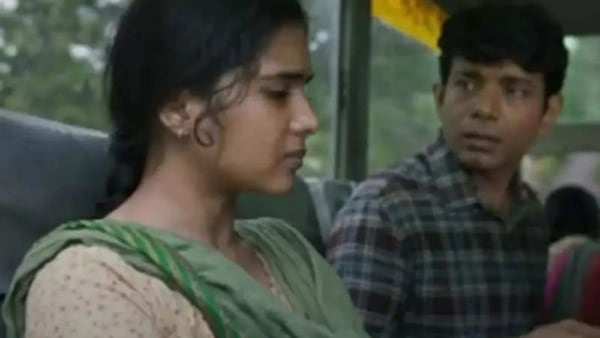Siya Review: This Valiant but Flawed First Film Turns a Survivor into a Victim

- Deepanjana Pal
Film Companion
Last Updated: 12.40 PM, Sep 15, 2022

The first time we meet 17-year-old Siya (Pooja Pandey), she’s telling her brother a bedtime story. It’s the only moment of sweet, uncomplicated happiness for our protagonist. Soon after, her life will hurtle headlong into trauma and chaos. Systems will be manipulated, the innocent will be victimised and every time it seems as though the worst has happened, a new development will reveal a new low. Predators lurk in every corner of the village of Devganj where Siya lives. From the misfortunes that befall her, it seems safe to say the gods have forsaken Devganj.
When Siya goes missing one day, Mahender (Vineet Kumar Singh), a family friend who works as a notary in Delhi, urges Siya’s parents to file a police complaint. However, the police refuse to entertain their pleas. Siya’s is a poor, lower-caste family and the upper-caste policemen dismiss them peremptorily. After a local newspaper carries a small article on the missing girl, a local politician orders the police to find her. Siya is eventually rescued from an abandoned building, where she was chained to a bed by four men from Devganj who had kidnapped her, kept her captive and raped her. Her release marks not the end of her trauma, but the beginning.
Siya’s story echoes the horrific tragedy of the 2017 Unnao rape case. Over two years, a 17-year-old survivor and her family suffered terrible injustices and oppression — all because she’d come forward to accuse a legislator, Kuldeep Singh Sengar, of rape. This is difficult terrain for a first-time director and writer to navigate and Mundra, who is best known for having backed films like Ankhon Dekhi (2014), Masaan (2015) and Newton (2017) as a producer, treads carefully. As a debutant director, there’s a lot he gets right. The film is unforgiving in its portrait of the morally-corrupt politician, who exploits the weak and abuses his power. The police and the courts don’t fare much better, with the former being shown as spineless and the latter as toothless. Devganj, its spaces and its residents feel authentic. Pandey delivers a powerful performance as Siya and she’s ably supported by a cast that seems to inhabit their roles. The only moments of uncomfortable artifice are in the room where Siya is held captive, when the camera trains its gaze on the red, peeling walls that are too obvious a visual metaphor for the violence being inflicted upon Siya.
The problem with this well-meaning film is that its focus on the social issues underpinning the plot, blinds it to everything else. It’s so fixated on showcasing trauma that it loses sight of empathy. The pile-up of tragedies quickly numbs the audience and a depressive lethargy settles over Siya. It doesn’t help that most of the characters seem like walking clichés. The local politician lives up to every negative stereotype associated with upper caste patriarchs of rural north India. The multiple policemen blend into a khaki blur of prejudice, violence and callous disregard. Despite being at the centre of the story, Siya is reduced to the trauma she’s suffered and ends up feeling almost like a device designed to expose the ugly and corrupt alliance between the political establishment and law enforcement. All we know about Siya is the way she’s violated. Even her name — a modification of Sita — is a loaded reference since the mythical heroine of the Ramayana was kidnapped and suffered great injustices. By the end of the film, even though she is technically a survivor, Siya seems like a victim, an object of pity rather than a person with whom one can empathise.
Flawed as it is, Siya is a valiant first effort for Mundra as a director. Rooted in gender violence, caste prejudice and the politics of rural north India, the film signals Mundra’s commitment to telling stories that speak uncomfortable truths. It also points to the need for Indian filmmakers to think about how they can articulate violence and violations in a way that feels impactful but doesn’t demean or dehumanise either the actor or the subject. Stories like Siya’s speak truth to society and they shouldn’t be forgotten. However, to render these stories less memorable in the process of retelling them, is also to do them an injustice.
